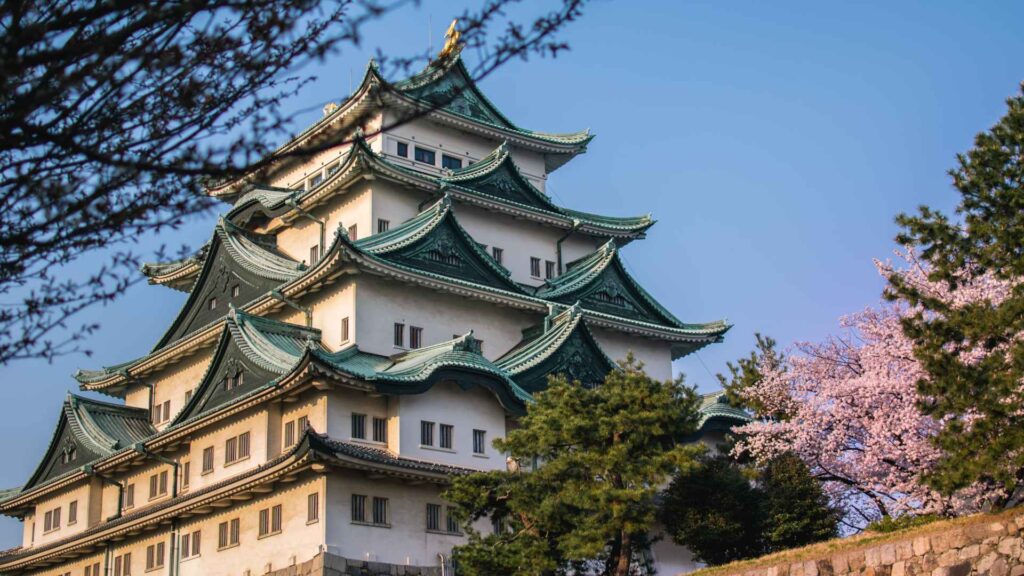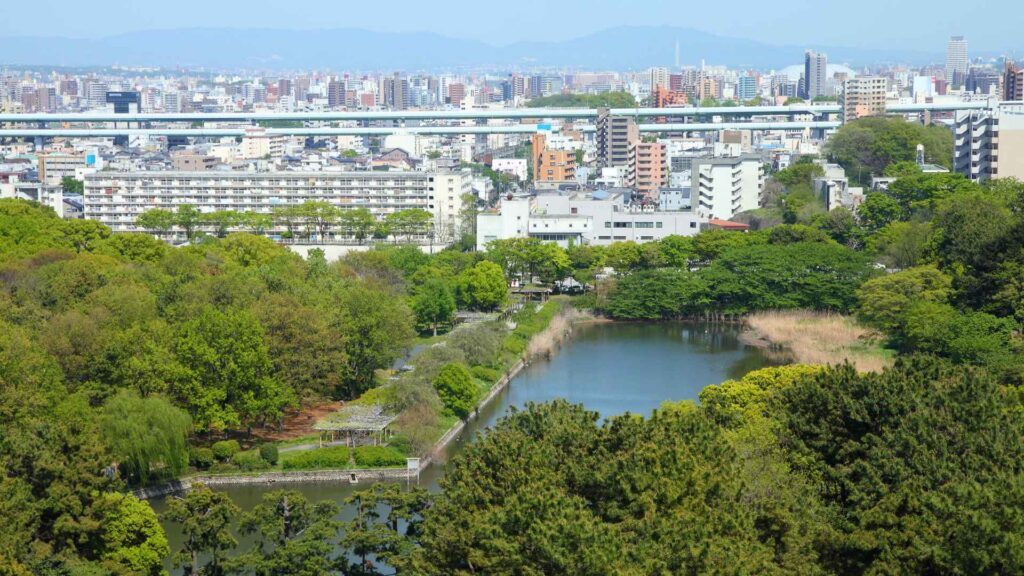Nagoya’s cruise port is a bustling gateway to one of Japan’s most vibrant cities.
From historical sites and cultural events to modern shopping and mouthwatering cuisine, there’s plenty for every traveler.
This comprehensive guide covers everything you need to know—from arriving at the port to exploring nearby attractions.
Overview of Nagoya Cruise Port
Nagoya Cruise Port sits along Ise Bay in central Japan, making it a prime entry point for exploring the energy and innovation of the country’s fourth-largest city.
This port, also known as the Nagoya Port, combines modernity with a strong cultural heritage, offering travelers a comfortable and organized landing spot.
Whether you’re docking for a day or starting an extended journey, you’ll find the port facilities well-equipped with helpful services.

A Modern Facility with Traditional Flair
- Passenger Terminal: Spacious waiting areas, multilingual signage, luggage storage, and helpful customer service booths.
- Technology-Driven Efficiency: Digital displays and automated check-in stations to ease passenger flow.
- Friendly Staff: Uniformed guides and port employees ready to answer your queries in English, Japanese, and sometimes other languages.
Rich Maritime History
The port’s development traces back to Nagoya’s strategic location as an important trade hub.
Over time, it evolved into a crucial site for commercial shipping and passenger travel, reflecting the city’s robust economic growth.
You’ll find maritime exhibitions at nearby museums, highlighting the region’s close ties to the sea.
Proximity to City Highlights
Nagoya Cruise Port’s prime location grants easy access to famous landmarks, including the renowned Port of Nagoya Public Aquarium, Legoland Japan, and the city’s iconic castle.
Cruise travelers can reach major attractions within a short train or shuttle ride, making it convenient to dive into the region’s cultural and modern wonders the moment you arrive. This blend of old and new ensures you’ll find everything from ancient temples to futuristic shopping malls within reach.
Navigating the Port and Transportation Options
Arriving at Nagoya Cruise Port means stepping into a well-organized transportation network that connects the dock to the heart of the city.
From speedy trains to convenient buses, every option is designed with the traveler in mind.
Port Layout and Facilities
- Arrival Zone: Clear signage directs you to baggage claim and customs procedures.
- Information Desk: Centrally located, providing updated transport schedules, maps, and essential guides in multiple languages.
- Currency Exchange and ATMs: Easily accessible near the terminal entrance for last-minute Japanese yen.
Public Transportation
- Meitetsu and JR Lines: Two major rail systems offer frequent trains from nearby stations. Meitetsu connects directly to Chubu Centrair International Airport, while JR lines reach key districts within minutes.
- City Bus: A budget-friendly choice, though travel times may be longer during peak hours. Some routes offer prepaid transportation cards, making transfers simpler.
Taxis and Ridesharing
- Taxi Stands: Marked areas just outside the terminal. Fares are metered, and drivers are usually honest and courteous.
- Ridesharing Apps: While not as prevalent as in Western countries, services like Uber are expanding in Japanese cities, offering additional convenience.
Port Shuttles
During busy cruise seasons, the port often runs dedicated shuttle buses to key destinations, such as Nagoya Station or major shopping complexes.
These shuttle services are perfect for those wanting direct, hassle-free access to city highlights without navigating multiple transfers.
Getting Around on Foot
For those who love walking, several attractions near the port are accessible by foot. Wide sidewalks and bike-friendly lanes make exploring the immediate area easy.
You’ll discover scenic waterfront promenades, small eateries, and souvenir shops just steps away from the terminal.

Top Cultural and Historical Attractions
Nagoya is renowned for weaving together the threads of Japan’s past with its modern edge.
From iconic castles to bustling shrines, the city boasts a range of cultural gems that beckon travelers from every corner of the globe.
Nagoya Castle
- Historical Landmark: Originally constructed in the early 17th century, famed for its golden shachihoko (mythical dolphin-like creatures).
- Castle Grounds: Serene gardens, cherry blossom trees (in season), and a reconstructed palace showcasing vibrant wall paintings.
- Cultural Festivals: Seasonal events highlight traditional Japanese dance, music, and martial arts.
Atsuta Shrine
Atsuta Shrine is one of Shinto’s most significant sacred sites, believed to house the Kusanagi-no-Tsurugi—a legendary sword tied to Japan’s imperial regalia.
As you stroll through the peaceful wooded grounds, you’ll find:
- Treasure Hall: Displays of ancient artifacts, ceremonial items, and precious scrolls.
- Seasonal Ceremonies: Regular festivals celebrating harvest, blessings, and national holidays.
Osu Kannon Temple
A haven for those seeking insight into Japan’s Buddhist heritage, Osu Kannon Temple invites visitors to enjoy a blend of spirituality and local tradition. The surrounding Osu Shopping District is perfect for picking up antiques, vintage clothing, and electronics.
- Flea Market: Held on the 18th and 28th of each month, featuring unique local crafts and collectibles.
- Temple Interiors: Beautiful carvings, murals, and a tranquil environment for reflection.
Cultural Performances and Museums
- Nagoya Noh Theater: Showcasing classical Japanese musical drama with centuries of history.
- Tokugawa Art Museum: Home to priceless samurai weapons, armor, tea ceremony utensils, and art pieces that represent feudal Japan’s aristocratic lifestyle.
- Toyota Commemorative Museum of Industry and Technology: Demonstrates the city’s shift from textiles to automotive engineering.
By immersing yourself in these sites, you’ll experience the spirit of tradition that defines Nagoya. Whether you delve into samurai lore at the castle or observe quiet Shinto rituals at Atsuta Shrine, each destination reveals a piece of Japan’s cultural tapestry.
Culinary Exploration in Nagoya
Nagoya is famous for its unique take on Japanese cuisine, blending savory flavors with a touch of regional flair. Foodies and casual diners alike can savor specialties that you won’t typically find in other parts of Japan.
Nagoya-Meshi Highlights
- Miso Katsu: A mouthwatering pork cutlet topped with a rich red miso sauce.
- Hitsumabushi: Charcoal-grilled eel served over rice, typically eaten in three ways: plain, with added condiments, or with a dash of broth.
- Tebasaki: Crisp and peppery chicken wings, a local pub favorite.
- Kishimen: Flat, broad noodles in a simple broth, often topped with fresh vegetables or fried tofu.
Casual Eateries and Izakayas
Wander the streets near Nagoya Station or the Sakae district to discover a range of izakayas (Japanese-style pubs) offering small plates of local dishes. Pair your meal with sake or an ice-cold beer for an authentic experience. Don’t miss:
- Cozy Atmosphere: Many izakayas feature dim lighting and counter seating, letting you watch chefs prepare dishes up close.
- Daily Specials: Menus often highlight fresh ingredients sourced from local markets.
High-End Dining
If you’re after a more upscale culinary experience, seek out kaiseki restaurants featuring multi-course meals. Here, chefs transform seasonal ingredients into intricate dishes presented like works of art.
Try the city’s premium wagyu beef or a sushi omakase to indulge in expert craftsmanship.
Street Food and Quick Bites
- Convenience Stores (Konbini): Don’t underestimate the quality of on-the-go meals here—freshly made bento boxes, rice balls, and sandwiches make quick, budget-friendly bites.
- Local Festivals: Street stalls often pop up during festival seasons, selling everything from takoyaki (octopus balls) to sweet taiyaki pastries shaped like fish.
Whether you venture into upscale restaurants or hole-in-the-wall diners, Nagoya’s food scene offers a vibrant feast that caters to every taste.
The city’s commitment to fresh, local produce and deep-rooted culinary traditions ensures every bite is an unforgettable experience.

Shopping and Souvenirs
Nagoya is a retail paradise for those seeking high-fashion brands, quirky collectibles, and traditional crafts.
You’ll find everything from sprawling department stores to hidden market stalls that offer unique souvenirs reflecting the city’s personality.
Department Stores and Malls
- Sakae District: Home to large malls like Oasis 21, Matsuzakaya, and Lachic, featuring international luxury brands, popular Japanese retailers, and stylish boutiques.
- Nagoya Station: Offers endless shopping at JR Central Towers, with a wide range of restaurants and shops conveniently located for travelers on the go.
Traditional Handicrafts and Local Goods
- Arimatsu-Narumi Shibori: A centuries-old tie-dye technique producing intricate patterns on fabrics. Perfect for scarves, handkerchiefs, and clothing pieces.
- Seto and Tokoname Pottery: Nagoya’s proximity to these ceramics hubs makes it easy to find artisan teapots, plates, and cups.
- Local Artisan Shops: Seek out smaller galleries or stalls displaying original artworks and crafts that make wonderful keepsakes.
Souvenir Suggestions
- Unique Snacks: Grab a bag of Ogura Toast-flavored snacks or Nagoya-style instant miso soup packs to bring local tastes home.
- Samurai-Themed Gifts: T-shirts, keychains, and small replicas of Nagoya Castle or golden shachihoko.
- Character Goods: Japanese pop culture is huge, so keep an eye out for exclusive anime figurines or plushies in dedicated hobby shops.
Shopping Tips
- Tax-Free: Look for “Tax-Free” signs in larger stores. Present your passport at the register to save on consumption tax if you meet the spending criteria.
- Payment Methods: Credit cards are widely accepted, but smaller shops may only take cash.
- Timing: Most major stores open around 10:00 AM and close by 8:00 PM, though some shopping streets remain lively until late.
With top-notch malls, quaint specialty stores, and a world of locally made goods, Nagoya ensures that your shopping spree will be filled with delightful finds. Remember to carry a tote or backpack for easy transport of your new treasures.
Nature and Leisure Activities
Beyond the urban bustle, Nagoya provides a refreshing change of pace with its serene parks, waterside activities, and hidden green escapes.
Whether you want to stroll through manicured gardens or catch a glimpse of wildlife, you’ll find plenty of ways to enjoy nature near the cruise port.
Port of Nagoya Public Aquarium
One of the port’s main draws, this impressive aquarium showcases marine life from Japan and beyond. Highlights include:
- Dolphin Shows: Watch these intelligent mammals perform flips and leaps in a massive stadium.
- Beluga Whales: Marvel at the graceful belugas in spacious tanks designed to mimic Arctic conditions.
- Antarctic Journey: Get up close with penguins in exhibits that replicate sub-zero climates.
Garden Escapes
- Shirotori Garden: A short distance from the city center, this traditional Japanese garden features winding paths, koi ponds, and tea houses. The landscaping changes with the seasons, providing a tranquil space for reflection.
- Higashiyama Zoo and Botanical Gardens: Ideal for families, this park combines a zoo, botanical gardens, and amusement rides, making it a fun outing for kids and adults.
Outdoor Leisure
- Cycling and Jogging: The areas along the port offer designated paths for easy cycling or running. Many rental bike stations can be found near major landmarks.
- Waterfront Promenades: Stroll by the waterfront to enjoy the sea breeze and scenic views of ships docking, or grab snacks from nearby food stalls.
- Picnic Spots: Local parks often have well-maintained lawns and picnic benches, perfect for enjoying a quick lunch outdoors.
Seasonal Highlights
- Cherry Blossoms: In spring, parks and temple grounds transform into a magical canopy of pink blossoms. Plan a hanami (flower-viewing party) under the trees.
- Autumn Foliage: Come fall, Japan’s maple and ginkgo trees display vibrant hues of red, orange, and gold—another perfect time for leisurely strolls.
For those seeking a break from the city’s bright lights, these natural retreats and fun activities add dimension to any Nagoya itinerary. Embrace the fresh air, admire the region’s wildlife, and soak in the local appreciation for preserving green spaces.
Day Trips and Excursions
If you have more than a day to explore, Nagoya’s central location makes it an excellent jumping-off point for regional excursions.
With efficient train connections and well-maintained highways, you can easily plan day trips that highlight the beauty, culture, and charm of central Japan.
Historic Gifu
A quick train ride from Nagoya, Gifu is famous for its cormorant fishing tradition along the Nagara River. Visitors can:
- Take an Evening Boat Ride: Witness local fishermen expertly use trained cormorants to catch fish, a practice dating back over a thousand years.
- Explore Gifu Castle: Perched atop Mt. Kinka, it offers panoramic views of the surrounding landscape.
Inuyama
This small castle town boasts Inuyama Castle, one of Japan’s oldest wooden fortresses. Nearby, you’ll find:
- Urakuen Garden: A lovely spot to experience a tea ceremony in a historically significant teahouse.
- Little World Museum of Man: A cultural park showcasing global architecture, foods, and customs.
Toyota City
Best known as the headquarters for the Toyota Motor Corporation, Toyota City offers:
- Toyota Kaikan Museum: Showcasing the latest car models, robotics, and eco-friendly technologies.
- Hands-On Factory Tours: Observe cutting-edge automotive production in action (advance booking is essential).
Ise-Shima Region
Known for its deeply rooted spiritual significance, the Ise-Shima area features:
- Ise Grand Shrine: Japan’s most sacred Shinto shrine, surrounded by ancient forests.
- Mikimoto Pearl Island: Learn about pearl cultivation and watch demonstrations by ama (female divers).
Getting There and Back
- Train: The Shinkansen (bullet train) and local rail lines connect Nagoya to surrounding prefectures with speed and efficiency.
- Highway Buses: Often cheaper than trains, these allow you to travel comfortably, though journey times can be longer.
- Guided Tours: Perfect for stress-free exploration; experienced guides handle logistics and provide in-depth cultural context.
By venturing beyond the city, you’ll gain a deeper appreciation for the region’s diversity, from samurai-era landmarks to cutting-edge engineering marvels. Each day trip rewards travelers with a fresh perspective on Japan’s cultural and natural allure.
Practical Tips & FAQs
To ensure a smooth journey, it’s essential to plan ahead. Here are some practical suggestions and answers to common questions that will help you make the most of your time in Nagoya.
Language and Communication
- English Signage: Major train stations, the port, and tourist spots have bilingual signs in Japanese and English.
- Translation Apps: Consider downloading a reliable offline translation app for quick phrase lookup.
- Helpful Locals: Many Japanese are eager to assist if approached politely. Use simple English or gestures when needed.
Money Matters
- Currency: Japanese Yen (JPY) is the standard. Credit cards are accepted in most urban locations, but keep some cash on hand.
- ATMs: 7-Eleven convenience stores and post offices usually accept international cards.
- Tipping: Not customary in Japan and can be considered impolite. Express gratitude with a sincere “Arigato gozaimasu” instead.
Safety and Etiquette
- Crime Rate: Japan’s crime rate is low, but remain vigilant with belongings, especially in crowded areas.
- Queuing: Form neat lines when waiting for trains or buses, and allow passengers to exit before boarding.
- Temple Etiquette: Bow or wash your hands at the purification fountain before entering a shrine or temple. Speak in hushed tones inside sacred spaces.
When to Visit
- Spring (March–May): Cherry blossoms create a picturesque setting.
- Autumn (September–November): Mild temperatures and vibrant foliage.
- Summer (June–August): Hot and humid, but filled with festivals and fireworks.
- Winter (December–February): Cooler weather, occasional snow, and fewer crowds.
Connectivity
- Wi-Fi: Available in many hotels, malls, and train stations. Pocket Wi-Fi devices are also available for rental at airports.
- SIM Cards: Short-term data SIMs can be purchased at airports or major electronics stores.
Port Departures
- Check-In Procedure: Arrive early to handle security checks and baggage.
- Port Announcements: Listen for instructions in English if available, and confirm your departure gate well in advance.
- Essential Documents: Keep your passport, boarding pass, and any visas close at hand, especially when moving between the port and the city.
These tips can significantly enhance your travel experience, allowing you to focus on the excitement of exploring Nagoya. With mindful preparation and a dash of local courtesy, you’ll navigate the city like a pro.


